

New England
Distinguished Achievement Award
Since 1950, the New England Ophthalmological Society has awarded a prize periodically to a New England ophthalmologist who has made the most valuable contribution in some aspect of ophthalmology. This tradition was inexplicably discontinued after 1985. The Executive Board of NEOS, realizing that there are many practioners deserving such recognition, re-instituted the award in 1997. In 2002, the name of the award was changed from “Man of the Year” to “NEOS Distinguished Achievement Award.”
Award Recipients
[row][column size=”1/2″ center=”no” class=””]1950 – W. Morton Grant, MD1951 – Paul A. Chandler, MD
1952 – David G. Cogan, MD
1954 – David Donaldson, MD
1955 – Charles L. Schepens, MD
1961 – Tochiro Kuwabara, MD
1962 – Herbert Kaufman, MD
1966 – Claes Dohlman, MD
1968 – Marvin Sears, MD
1975 – William Beetham, MD
1977 – John Dowling, MD
1978 – Paul Vinger, MD
1980 – Taylor Smith, MD
1983 – Torsten Weisel, MD
and David Hubel, MD
1985 – Elliot Berson, MD[/column] [column size=”1/2″ center=”no” class=””]1997 – B. Thomas Hutchinson, MD
1999 – Hal Freeman, MD
2001 – Richard Simmons, MD
2003 – Ralph Hinckley, MD
2004 – Charles Davis Belcher III, MD
2015 – Roger Steinert, MD
2015 – Martin Wand, MD
2016 – Simmons Lessell, MD
2018 – Deborah Pavan-Langston, MD
2019 – Phil A. Aitken, MD
2020 – Anne M. Bajart, MD
[/column][/row]How to nominate a NEOS member for the Distinguished Achievement Award
Summary
The NEOS Distinguished Achievement Award is given to an individual who has been or is, an active member of NEOS for ten years or more, with a record of service to NEOS, and has made significant contributions to ophthalmology through one of the following:
Contributions through research or clinical innovation
Contributions through education and training
Contributions through community service, such as service and leadership in NEOS and other professional organizations or outreach efforts either domestic or international
The awardee must also be an individual considered by their peers to demonstrate good standards of professionalism.
Process and Timeline
December 31st
Submit nomination form, 2 letters of nomination and a CV of the nominee. Nominators must have been members of NEOS for 10 years or more and be from different institutions or practice groups.
Nominations committee reviews and makes recommendation to the Board of NEOS at March meeting. Nominees will be notified thereafter and if an award is being given, the award will be presented preferably at the following September, March or April NEOS meeting.
To access the Nominee Form, you must login in the members only section.
1950
W. Morton Grant, MD [1915-2001]
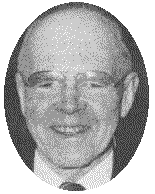 Morton Grant was born July 12, 1915, at Lawrence, Massachusetts. He was graduated from Harvard College in 1936 and from Harvard Medical School in 1940. Dr. Grant spent one year as a surgical intern at Henry Ford Hospital in Detroit and then, with the onset of the Second World War, was drafted into the war-time researches of the Howe Laboratory of Ophthamology.
Morton Grant was born July 12, 1915, at Lawrence, Massachusetts. He was graduated from Harvard College in 1936 and from Harvard Medical School in 1940. Dr. Grant spent one year as a surgical intern at Henry Ford Hospital in Detroit and then, with the onset of the Second World War, was drafted into the war-time researches of the Howe Laboratory of Ophthamology.
Born into a physician’s family, Dr. Grant logically went into medicine but his native interests have always inclined him to chemistry. This was early evident when, as a boy, he is said to have developed some pyrotechniques that caused great concern to the neighborhood. In the years of his preparatory school he was top man in his chemistry class and in college he was permitted to do advanced work in organic chemistry while still an undergraduate. Whether to pursue a career in chemistry or to go into medicine was no little problem. The precedent and advice of his father decided him in favor of the latter, and Dr. Grant’s subsequent life has proved that the two fields are not mutually exclusive.
While in medical school, Dr. Morton Grant elected additional courses in ophthalmology and came in contact for the first time with ophthalmic research. After finishing his surgical internship, he returned to ophthalmic research in earnest. By force of circumstances he was first concerned with the effects of mustard gas on the eyes and on tissue in general. Together with Dr. Kinsey, he was the first to develop a test for the persistence of mustard gas in tissue.
His work has lead to pioneering papers in aqueous humor dynamics, pharmacology of the eye, and toxicology of the eye.
From material provided by Robert Bellows, MD
1951
Paul A. Chandler, MD [1896-1986]
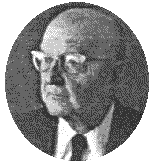 Active in eye research from the beginning of his career, Dr. Chandler wrote 71 articles on ophthalmology and glaucoma. He coauthored “Lectures in Glaucoma” in 1965, revised in 1979 to “Glaucoma.’ The book was the principal text on glaucoma for many years.He was the first of many to recognize Chandler’s Syndrome, a variant of the irido-corneal-endothelial (ICE) syndrome.
Active in eye research from the beginning of his career, Dr. Chandler wrote 71 articles on ophthalmology and glaucoma. He coauthored “Lectures in Glaucoma” in 1965, revised in 1979 to “Glaucoma.’ The book was the principal text on glaucoma for many years.He was the first of many to recognize Chandler’s Syndrome, a variant of the irido-corneal-endothelial (ICE) syndrome.
He was former president of the American Ophthalmological Society, the New England Ophthalmological Society, and was former chairman of the American Board of Ophthalmology.The Paul A. Chandler full-time endowed professorship in ophthalmology was established at the Infirmary and Harvard Medical School in 1986.
Born in New Virginia, Iowa, Dr. Chandler lived in Nebraska before moving to Boston in 1920. He was a graduate of Hastings College, Nebraska, and Harvard Medical School. Dr. Chandler completed his residency in ophthalmology at the Infirmary in 1925 and joined the staff of the Infirmary in 1929. He retired in 1979 as consulting chief of ophthalmology, a position he held for over 20 years.
From material provided by Christine Sims, Howe Library
1952
David G. Cogan, MD [1908-1993]
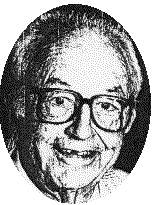 Dr. David Cogan was widely recognized as one of the world’s leading clinical ophthalmologists and educators. He was also a highly regarded pathologist whose studies of atomic bomb victims in Hiroshima and Nagasaki led to important findings on cataract development and radiation damage to the eyes.
Dr. David Cogan was widely recognized as one of the world’s leading clinical ophthalmologists and educators. He was also a highly regarded pathologist whose studies of atomic bomb victims in Hiroshima and Nagasaki led to important findings on cataract development and radiation damage to the eyes.
Dr. Cogan was born in Fall River. He graduated from Dartmouth College in 1929 and earned his medical degree from Harvard Medical School. He completed his residency in ophthalmology at the Massachsetts Eye and Ear Infirmary, where he later became director of the ophthalmic laboratories and director of the eye pathology department.
From 1940 to 1973 he was director of Harvard Medical School’s Howe Laboratory of Ophthalmology. From 1962 to 1968 he was chairman of the school’s department of ophthalmology.
In 1966 his “Neurology and the Visual System” was published. The textbook was for many years an important reference work for ophthalmologists and neurologists.
Dr Cogan contributed more than 500 publications to the ophthalmic literature. But it is not the volume of his work that is so impressive; it it the quality of it. Among Dr. Cogan’s best known studies are those on the physiology and pathology of the cornea; vascular changes in the retina; the pathology of the optic nerve; and the neurology of the ocular muscles. His name is associated with various entities in ophthalmology that he first described. In fact, when one speaks of “Cogan’s syndrome,” it is necessary to specify whether it is epithelial dystrophy, non-luetic interstitial keratitis, or an opticokinetic abnormality with occipital lobe field defects to which one refers.
Adapted from Obituary in Boston Globe and Archives of Ophthalomology by Daniel Albert
1954
David Donaldson, MD
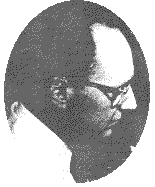 Dr David Donaldson graduated from the University of Michigan in 1941 obtaining a degree of BS in Chemistry and earned his Doctorate of Medicine from the same university in 1945. After a rotating internship at Henry Ford Hospital in Detroit, he was first stationed at Fort Bragg working in the Eye Clinic and then became Chief of the EENT section of the Fort Clayton General Hospital in the Panama Canal Zone. It was during this period of military service that he designed and built his first stereoscopic anterior segment camera combining two 35 mm cameras.
Dr David Donaldson graduated from the University of Michigan in 1941 obtaining a degree of BS in Chemistry and earned his Doctorate of Medicine from the same university in 1945. After a rotating internship at Henry Ford Hospital in Detroit, he was first stationed at Fort Bragg working in the Eye Clinic and then became Chief of the EENT section of the Fort Clayton General Hospital in the Panama Canal Zone. It was during this period of military service that he designed and built his first stereoscopic anterior segment camera combining two 35 mm cameras.
After completing an ophthalmology residency at the Massachusetts Eye and Ear Infirmary in 1953, Dr Donaldson became a full time member of the Howe Laboratory.Here he perfected the “Donaldson Stereoscopic Camera,” utilizing a strobe light developed with Harold Edgerton at the Massachusetts Institute of Technology. By 1979 he had photographed more than 36000 patients with various types of anterior segment diseases. It was this vast experience which enabled him to publish the beautifully illustrated five volumes titled Atlas of External Diseases of the Eye.
Dr. Donaldson also produced a brilliantly conceived binocular indirect ophthalmoscope which verted the usually inverted image seen with this method of ophthalmoscopy. However, this instrument indeed created an erect image of the fundus when viewed through the condensing lens. However it did not become popular since the ophthalmoscope inverted everything else viewed including the patient. the room, and the ophthalmologist’s hands.
Adapted from obituary by Robert Brockhurst
1955
Charles L. Schepens, MD [1912-2006]
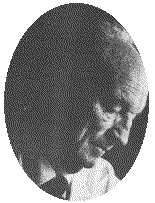 Recognized as the “father of modern retinal surgery” by many, Charles L. Schepens. M.D. has combined several fulltime careers. He is a practicing physician and retinal surgeon, a teacher of many of the world’s retina specialists, a clinical investigator, a surgical innovator. and the author of over 340 medical papers and 4 books.
Recognized as the “father of modern retinal surgery” by many, Charles L. Schepens. M.D. has combined several fulltime careers. He is a practicing physician and retinal surgeon, a teacher of many of the world’s retina specialists, a clinical investigator, a surgical innovator. and the author of over 340 medical papers and 4 books.
The current practice of ophthalmology owes a great deal to the brilliance and energy of Charles Schepens. He was one of a handful of ophthalmologists who recognized many years ago that progress in clinical practice must come through the joining together of basic, applied, and clinical eye research. He promoted the concept of the “marriage” of eye research and ophthalmic practice.
Born in Belgium in 1912, Charles Schepens studied mathematics before turning to medicine. His interest in mathematics led to subsequent interest in ophthalmic instrumentation. Dr Schepens received his medical degree in 1935 and, after graduate research work, he trained in eye diseases at Moorfields Eye Hospital.
When Belgium was invaded in 1940, Dr. Schepens became a medical officer in the Belgian Air Force. After his country fell to the Germans, he escaped to France to become a distinguished leader in the French underground Resistance.
After the war, Dr Schepens resumed his career in ophthalmology at Moorfields. He came to the United States in 1947 as a fellow in ophthalmic research at the Howe Laboratory of Ophthalmology, Harvard Medical School. In 1949 he established and became the first Director of the Retina Service at the Massachusetts Eye and Ear Infirmary, the first such service of its kind.
In 1950 Dr Schepens established what he first envisioned as a center for intensive investigation of retinal detachment and allied conditions. He called this new research laboratory the Retina Foundation which was renamed the Eye Research Institute of Retina Foundation in 1974 to more accurately describe the variety of eye research underway in the laboratories. The staff expanded from 6 people in 1950 to a staff of approximately 200.
Charles Schepens has always maintained a firm commitment to education and has made every effort to give the profession the benefit of his vast experience. He has trained nearly over 170 vitreoretinal surgeons and given countless lectures and courses.
Adapted from NEOS biography by Hal M. Freeman
1961
Toichiro Kuwabara MD, PhD [1920-1991]
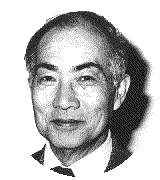 Born in Japan where he received his MD and PhD degrees, Dr. Kuwabara and his family moved to the United States in 1952 where he began a long and remarkable career in ophthalmic research. He became faculty member of the Harvard Medical School and worked in the Howe Laboratory of the Massachusetts Eye and Ear Infirmary for 30 years, earning the rank of Professor of Pathology. During these years he developed a close working relationship with many scientists, especially Dr. David Cogan. In 1972 Dr. Kuwabara became Chief of the Laboratory of Ophthalmic Pathology in the National Eye Institute, where he collaborated again with Dr. Cogan and others. His focus shifted from research toward teaching near the end of his career when he moved to Indiana University in 1989 and joined the Department of Ophthalmology as Professor.
Born in Japan where he received his MD and PhD degrees, Dr. Kuwabara and his family moved to the United States in 1952 where he began a long and remarkable career in ophthalmic research. He became faculty member of the Harvard Medical School and worked in the Howe Laboratory of the Massachusetts Eye and Ear Infirmary for 30 years, earning the rank of Professor of Pathology. During these years he developed a close working relationship with many scientists, especially Dr. David Cogan. In 1972 Dr. Kuwabara became Chief of the Laboratory of Ophthalmic Pathology in the National Eye Institute, where he collaborated again with Dr. Cogan and others. His focus shifted from research toward teaching near the end of his career when he moved to Indiana University in 1989 and joined the Department of Ophthalmology as Professor.
Author of more than 250 references, he is one of the most widely cited ophthalmologists in history. Among his notable achievements are the co-discovery of the retinal capillary pericyte and the trypsin digestion technique for retinal vessel study. He subsequently described the vasculopathic features of diabetes and hypertension of the retina. His papers include the definitive pathologic descriptions of many ocular disorders such as cystinosis, lipid keratopathies, and Tay-Sachs Disease. He studied the dehydrogenases and glycogen of the retina. Dr. Kuwabara was also a pioneer in applying electron and scanning electron microscopy to the eye. He and his colleagues were among the first to describe the electron microscopic features of the conjunctiva, cornea, lens and pigment epithelium. He was among the first to study the histopathologic features of experimental phototoxicity, experimental glaucoma, the effects of vitamin A and E deficiencies in animals, and the production of experimental uveitis with S-antigen.
His major avocation was the photography of wild flowers and he filled numerous journals with prints, botanical descriptions, locations and dates. Examples of his exquisite photographic work adorn the Ophthalmology Clinic at Indiana University.
Courtesy of Ron Danis, MD
“His legacy lives on in the minds of his students, whom he has inspired with his passion for the beauty in science and nature”
-Commemorative plaque in the Indiana University Ophthalmology Clinic
1962
Herbert E. Kaufman, MD
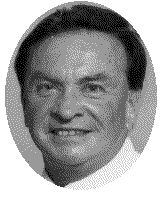 Herbert E. Kaufman, M.D. is Boyd Professor of Ophthalmology and Pharmacology and Experimental Therapeutics, Head of the Department of Ophthalmology, and Director of the LSU Eye Center, Louisiana State University Medical Center School of Medicine in New Orleans. He received his undergraduate degree from Princeton University and his medical degree from Harvard University. He interned at the Massachusetts General Hospital, after which he spent two years as a Fellow at the National Institutes of Health, followed by a residency in ophthalmology at the Massachusetts Eye and Ear Infirmary. He was the Chairman of the Department of Ophthalmology at the University of Florida in Gainesville from 1962 through 1977. In 1978, he moved to his present position in New Orleans .
Herbert E. Kaufman, M.D. is Boyd Professor of Ophthalmology and Pharmacology and Experimental Therapeutics, Head of the Department of Ophthalmology, and Director of the LSU Eye Center, Louisiana State University Medical Center School of Medicine in New Orleans. He received his undergraduate degree from Princeton University and his medical degree from Harvard University. He interned at the Massachusetts General Hospital, after which he spent two years as a Fellow at the National Institutes of Health, followed by a residency in ophthalmology at the Massachusetts Eye and Ear Infirmary. He was the Chairman of the Department of Ophthalmology at the University of Florida in Gainesville from 1962 through 1977. In 1978, he moved to his present position in New Orleans .
Dr. Kaufman developed the first effective antivirals, and pioneered the combination of steroid and antiviral therapy. He was involved in the development of M-K and K-Sol media, which made modern eye banks possible, the introduction of therapeutic soft contact lenses, and the development and clinical use of specular microscopy. He and his co-workers discovered that intraocular lenses can produce corneal endothelial damage, and that this damage can be prevented by viscous agents. He also helped to identify the beta adrenergic blocking agent, timolol, and was involved in the first clinical use of this drug to treat glaucoma. He has also been a leader in the development of refractive surgery in the United States.
He is a member of more than 30 professional associations and societies, including the American Academy of Ophthalmology, the American College of Surgeons, and the Royal Society of Medicine, England, and was the editor of Investigative Ophthalmology and Visual Science and served on the Editorial Boards of a number of journals, including the American Journal of Ophthalmology. He has been president of the Association for Research in Vision and Ophthalmology, the Contact Lens Association of Ophthalnologists, and the International Society of Refractive Keratoplasty and has served two terms on the Advisory Council of the National Eye Institute.
Among his honors are the Proctor Award (Association for Research in Vision and Ophthalnology, 1978), Pocklington Lecture (Royal College of Surgeons, London, 1979), XXXVI Edward Jackson Memorial Lecture (American Academy of Ophthahnology, 1979), the Twentieth Annual Edwin B. Dunphy Lecture (Harvard Medical School, Mass. Eye and Ear Infumary Alumni Assoc., 1983), the First Annual Wohl Lecture in Ophthalmology (Rambam Medical Center, Haifa, Israel, 1983), the Annual Glover-Lisman Lecture (Manhattan Eye, Ear, and Throat Hospital, New York City, 1983), the R. Townley Paton, M.D. Award (Eye Bank Association of America, 1983), the G. Victor Simpson Lecture (Washington Hospital Center, Washington, D.C., 1984), the Peter Kronfeld Memorial Lecture (University of Illinois Eye and Ear Infirmary, Chicago, Illinois, 1984), the Kiewiet de Jonge Award (European Intraocular Implant Lens Council, Cannes, France, 1985), the Irvine Lecture (Doheny Eye Center, 1986), the Castroviejo Lecture (Castroviejo Society, 1987), the Montgomery Medal (Irish Ophthalnoiogical Society, 1987), the first Gold Medal of the Saudi Ophthalnologicai Society (1989), the Earl Padfield Lecture (University of Kansas Medical Center, 1987), Innovators Award (American Society of Cataract and Refractive Surgery, 1990), the Ruedemann Memorial Lecture (Kresge Eye Institute, Detroit, 1990), the First Annual Claes Dohlman Lecture (Harvard Medical School, Boston, 1991), and the Jules Stein Living Tribute Award (RP International, Woodland Hills, California, 1992), the Award of Honor of the Association for Antiviral Therapy (1994), and the Alcon Research Recognition Award (1997).
He has more than 700 publications in his bibliography, including work on herpesvirus and ocular disease, antiviral drugs, corneal surgery, and refractive surgery.
1966
Claes H. Dohlman, MD
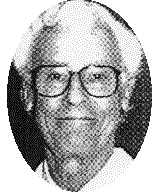 Claes Henrik Dohlman was born on September 11, 1922 in Uppsala, Sweden.Claes earned his M.D. degree in 1950 at the University of Lund in Sweden and then served as a resident in ophthalmology in the Eye Clinic of the University of Lund. Nearly a decade of research fellowships ensued at Johns Hopkins, Stanford, Retina Foundation and the Karolinska Institute, culminating in receipt of a Doctorate of Medical Research from the University of Lund where he then became a Decent (Assistant Professor). In 1958, Claes returned to the Retina Foundation as a research associate and the Massachusetts Eye and Ear Infirmary as a fellow in ophthalmology.
Claes Henrik Dohlman was born on September 11, 1922 in Uppsala, Sweden.Claes earned his M.D. degree in 1950 at the University of Lund in Sweden and then served as a resident in ophthalmology in the Eye Clinic of the University of Lund. Nearly a decade of research fellowships ensued at Johns Hopkins, Stanford, Retina Foundation and the Karolinska Institute, culminating in receipt of a Doctorate of Medical Research from the University of Lund where he then became a Decent (Assistant Professor). In 1958, Claes returned to the Retina Foundation as a research associate and the Massachusetts Eye and Ear Infirmary as a fellow in ophthalmology.
In 1959, he began the Cornea Service in a small room in the Infirmary, became Director of the Boston Eye Bank in 1961, and was appointed Director of the Department of Cornea Research of the Retina Foundation in 1962. After serving for seven years as an Instructor in Ophthalmology, his accomplishments were rewarded with promotions to Assistant Professor (1968), Associate Professor (1969), and in 1974, Professor of Ophthalmology at Harvard Medical School. That same year, Prof. Dohlman assumed the positions of Chairman of the Department of Ophthalmology of Harvard Medical School, Director of the Howe Laboratory of Ophthalmology, and Chief of Ophthalmology of the Massachusetts Eye & Ear Infirmary. Although Claes retired from these administrative roles in 1989 he remains ever active as a member of the Infirmary’s Cornea Service, with ongoing clinical, dedicated teaching and renewed research interests.
Dr. Dohlman’s major research interests include corneal hydration, corneal ulceration and wound healing, herpes, the dry eye and surgical innovations in keratoplasty and keratoprosthesis. He is generally regarded as a founder of modern corneal science.
From material provided by Christine Sims, Howe Library
1986
Marvin Sears, MD
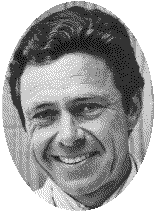 Marvin L. Sears, M.D. is Professor and former (resigned in June 1993) Chairman of the Department of Ophthalmology and Visual Science at Yale University School of Medicine, a department which he created. Dr. Sears received his B.A. from Princeton and his M.D. from the College of Physicians and Surgeons at Columbia University. An internship at Columbia-Bellevue and residency in ophthalmology at Johns Hopkins Hospital followed.
Marvin L. Sears, M.D. is Professor and former (resigned in June 1993) Chairman of the Department of Ophthalmology and Visual Science at Yale University School of Medicine, a department which he created. Dr. Sears received his B.A. from Princeton and his M.D. from the College of Physicians and Surgeons at Columbia University. An internship at Columbia-Bellevue and residency in ophthalmology at Johns Hopkins Hospital followed.
Sears’ work in adrenergic pharmacology of the eye resulted in the development and approval of timolol, a beta adrenergic blocker, for the treatment of glaucoma. It was the first useful topical medication for glaucoma since 1908. That compound has been the mainstay in the medical therapy of glaucoma. Sears has received the most prestigious ophthalmic award for this research, the Friedenwald Lectureship (1917). Sears research is funded by a MERIT grant by the National Institutes of Health.
He authored the Pharmacology of the Eye, the classic in the field (Springer-Verlag Handbook Series), Surgical Pharmacology of the Eye (Raven Press), and more than 200 scientific articles.
He developed two innovative surgical procedures for clot removal and tumor removal from the eye, now used worldwide.
Under his direction the residency at Yale earned a reputation for turning out extraordinarily well-trained ophthalmologists. Trainees of his hold professorships and directorships in eye disease in eight places in Japan and, in the United States, at Harvard, Yale, Hopkins, Stanford, Northwestern, and others. For his research and service contributions to worldwide visual health, a fully endowed chair–a senior professorship– was established at Yale in his name in 1993 by patients whom he served.
1975
William P. Beetham, MD [1902-1979]
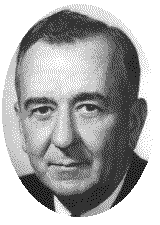 Born in 1902 in Bellaire, Ohio, he was the son of a physician and banker, one of five children. He entered Ohio Wesleyan University at the remarkable age of 16 and graduated from Harvard Medical School, Class of 1926. He received his specialty training at the Massachusetts Eye and Ear Infirmary, where he later became a Surqeon-in-Chief (1940-1963) and Assistant Clinical Professor of Ophthamology at Harvard Medical School (19S3-1963).
Born in 1902 in Bellaire, Ohio, he was the son of a physician and banker, one of five children. He entered Ohio Wesleyan University at the remarkable age of 16 and graduated from Harvard Medical School, Class of 1926. He received his specialty training at the Massachusetts Eye and Ear Infirmary, where he later became a Surqeon-in-Chief (1940-1963) and Assistant Clinical Professor of Ophthamology at Harvard Medical School (19S3-1963).
During the 46 years of his active professional career, Dr. Beetham made major contributions toward the understanding of diabetic eye disease and pioneered the modern laser treatment of diabetic retinopathy at the Joslin Clinic, where the William P. Beetham Eye Unit is named in his honor.
His seminal paper on ruby laser photocoagulation of proliferative diabetic retinopathy, published in 1969, now forms the basis of the treatment techniques used today in halting the progression of diabetic retinopathy throughout the world.
Courtesy of Dr. Lloyd Aello and Dr. Jerry Cavallerano
1977
John E. Dowling, PhD
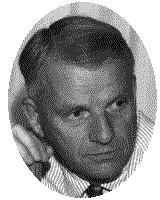 John E. Dowling received his A.B. and Ph.D. from Harvard University. He taught in the Biology Department at Harvard from 1961 to 1964, first as an Instructor, then as Assistant Professor. In 1964 he moved to Johns Hopkins University, where he held an appointment as Associate Professor ofOphthalmology and Biophysics. He returned to Harvard as Professor of Biology in 1971, and he is now Maria Moors Cabot Professor of Natural Sciences. He was Chairman of the Biology Department at Harvard from 1975 to 1978 and served as Associate Dean of the Faculty of Arts and Sciences from 1980 to 1984. He has been Master of Leverett House at Harvard since 1981.
John E. Dowling received his A.B. and Ph.D. from Harvard University. He taught in the Biology Department at Harvard from 1961 to 1964, first as an Instructor, then as Assistant Professor. In 1964 he moved to Johns Hopkins University, where he held an appointment as Associate Professor ofOphthalmology and Biophysics. He returned to Harvard as Professor of Biology in 1971, and he is now Maria Moors Cabot Professor of Natural Sciences. He was Chairman of the Biology Department at Harvard from 1975 to 1978 and served as Associate Dean of the Faculty of Arts and Sciences from 1980 to 1984. He has been Master of Leverett House at Harvard since 1981.
Professor Dowling is a Fellow of the American Academy of Arts and Sciences, a member of the National Academy of Sciences and a member of the American Philosophical Society. He received the Friedenwald Medal fiom the Association of Research in Ophthalmology and Vision in 1970, the Annual Award of the New England Ophthalmological Society in 1979, the Retinal Research Foundation Award for Retinal Research in 1981, an Alcon Vision Research Recognition Award in 1986 and the Von Sallman Prize in 1992. In 1987 he received a National Eye Institute’s MERIT award. He was granted a honorary M.D. degree by the University of Lund (Sweden) in 1982 and presently he is a Trustee of the Massachusetts Eye and Ear Infirmary. He served as a member of Council of the Society of Neuroscience from 1985-1989, Trustee of the Marine Biological Laboratory from 1970-1977 and from 1986-1990, Director of Scientific Review of Fight-for-Sight, Inc., from 1982- 1987, and a member of the Medical Advisory Board of the Howard Hughes Medical Institute from 1987-1991.
He was a member of the Council of the National Academy of Sciences (1993-1996); President of The Association for Research in Vision and Ophthalmology (19961997), and is presently on the Board of Directors of the Alliance for Vision and Eye Research and the Scientific Advisory Boards of Research to Prevent Blindness, the Foundation Fighting Blindness and the Knights Templar Eye Foundation. He is currently President of the Corporation of The Marine Biological Laboratory in Woods Hole.
Dr. Dowling’s extensive research has added immensely to the understanding of the organization of the vertebrate retina.
1978
Paul F. Vinger, MD
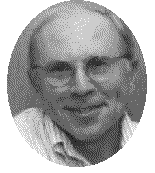 Dr. Vinger hails from New Jersey. After completing medical school at New Jersey College of Medicine, he went through ophthalmology residency training at Montefiore Hospital in the Bronx. He currently is in private practice in Lexington, Concord and Arlington, MA.
Dr. Vinger hails from New Jersey. After completing medical school at New Jersey College of Medicine, he went through ophthalmology residency training at Montefiore Hospital in the Bronx. He currently is in private practice in Lexington, Concord and Arlington, MA.
Dr. Vinger has devoted years of research time to the study of eye injuries, their mechanism and prevention. These studies have lead to the establishment of standards of eye protective equipment in racket sports, ski goggles, hockey face helmets, baseball face protectors, fencing headgear, equestrian head protection, and even paintball eye protection.
In addition to helping design these diverse items, Dr. Vinger has worked tirelessly to promulgate eye safety in sports by his work on articles, monographs, educational films and lectures to lay people, nurses, physicians and optometrists.
Dr. Vinger’s work in developing eye safety standards as well as heightening awareness of the problem has no doubt prevented many serious eye injuries.
1980
Taylor R. Smith, MD [1918-1983]
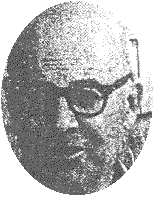 Taylor R. Smith was born in Pennsylvania but spent his formative years in southern California. As a youngster he was stricken with osteomyelitis. At this time, before antibiotics were available, he was forced to undergo numerous hospitalizations and surgical procedures, the end result being a severe limitation of the use of his legs as he entered adult life. Tossing aside this problem as a minor nuisance, he went to Occidental College and then obtained his medical doctorate at the University of Southern California Medical School in 1943. At Billings Hospital, University of Chicago, he completed a residency in medicine and then went on to specialize in hematology. Fortunately, for ophthalmology, he lost interest in red and white blood cells and entered a residency in ophthalmology at the Massachusetts Eye and Ear Infirmary, which he completed in 1951. Taylor, along with his co-resident and friend Samuel T. Adams, was introduced at this time to the new indirect ophthalmoscope by Charles L. Schepens and immediately decided to devote his energies to diseases of the retina.
Taylor R. Smith was born in Pennsylvania but spent his formative years in southern California. As a youngster he was stricken with osteomyelitis. At this time, before antibiotics were available, he was forced to undergo numerous hospitalizations and surgical procedures, the end result being a severe limitation of the use of his legs as he entered adult life. Tossing aside this problem as a minor nuisance, he went to Occidental College and then obtained his medical doctorate at the University of Southern California Medical School in 1943. At Billings Hospital, University of Chicago, he completed a residency in medicine and then went on to specialize in hematology. Fortunately, for ophthalmology, he lost interest in red and white blood cells and entered a residency in ophthalmology at the Massachusetts Eye and Ear Infirmary, which he completed in 1951. Taylor, along with his co-resident and friend Samuel T. Adams, was introduced at this time to the new indirect ophthalmoscope by Charles L. Schepens and immediately decided to devote his energies to diseases of the retina.
During the next three decades his stamina and determination resulted in a prodigious amount of service to physicians and patients. Clinically, this effort included hundreds of successful retina operations each year, including his last. In this regard, Taylor demonstated a phenomenal memory, being able to recall an individual patient’s name, the type of retinal problem, and the treatment employed years after he had last seen the patient. In teaching, he trained dozens of fellows, many of whom are now renowned leaders in the field of retinal disease. He was also a champion and advocate for residents and taught several hundred at the Massachusetts Eye and Ear Infirmary to become careful, caring, and competent ophthalmologists. His obvious dedication to the needs and education of fellows and residents earned him their everlasting friendship and love.
For 25 years he directed the Eye Pathology Laboratory at the Massachusetts Eye and Ear Inftrmary. During this time he examined thousands of eye specimens, using this material to train young doctors in ophthalmic pathology.
Adapted from obituary by Robert Brockhurst
1983
David H. Hubel, MD and Torsten N. Wiesel, MD
Dr. Hubel received his bachelor’s degree and MD from McGill University. He joined the faculty of the Harvard Medical School in 1959. Dr. Wiesel earned his medical degree from Karolinska Institute in Stockholm in 1954 and joined the Harvard Medical School faculty the same year as Hubel.
Drs. Hubel and Wiesel studied the functional and structural details of the visual cortex.In the 1960s the pair studied the effects of abnormal visual experience on the immature nervous systems of young animals, simulating human amblyopia.
Their work earned them the Nobel Prize for Physiology or Medicine in 1981.
1985
Eliot L. Berson, MD (1937-2017)
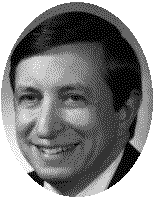 Eliot L. Berson, MD is an intemationally recognized authority on retinitis pigmentosa and allied rerinal diseases. Dr. Berson has dedicated his professional life to the study of retinal degenerations, both in the laboratory and in the clinic. He has long understood that an essential prerequisite to developing treatments for hereditary retinal degenerations involves an understanding of the natural course of these diseases and the underlying cellular mechanisms that lead to death of retinal cells. He early embarked on this mission by establishing the first multidisciplinary laboratory in the world devoted to this endeavor. The Berman-Gund Laboratory combines expertise in elecrophysiology, molecular genetics, biochemistry, pathology, tissue culture, biostatistics, and psychophysics, as well as ophthalmology.
Eliot L. Berson, MD is an intemationally recognized authority on retinitis pigmentosa and allied rerinal diseases. Dr. Berson has dedicated his professional life to the study of retinal degenerations, both in the laboratory and in the clinic. He has long understood that an essential prerequisite to developing treatments for hereditary retinal degenerations involves an understanding of the natural course of these diseases and the underlying cellular mechanisms that lead to death of retinal cells. He early embarked on this mission by establishing the first multidisciplinary laboratory in the world devoted to this endeavor. The Berman-Gund Laboratory combines expertise in elecrophysiology, molecular genetics, biochemistry, pathology, tissue culture, biostatistics, and psychophysics, as well as ophthalmology.
Dr. Berson’s first major contribution was the discovery that the light-evoked electrical response from the retina (called the electroretinogram or ERG) is not only reduced in size but delayed in response time thereby allowing detection of retinitis pigmentosa as much as a decade before the onset of symptoms or the appearance of pigment in the retina. He and his colleagues extended the range of detectability of ERG responses over a hundred fold with computer averaging; this has made it possible to follow the course objectively and with great sensitivity long after the ERG is extinguished with routine testing procedures. In 1993 his team completed a six-year study that showed that the course of the common forms of retinitis pigmentosa as monitored with the computerized ERG, is slowed on average among adults taking a daily supplement of vitamin A. This discovery represented a milestone in the management of patients with these diseases.
Dr. Berson has also shown that the ERG can be used not only to detect which patients are affected in families with retinitis pigmentosa but also which patients are normal. Patients with normal ERGs do nor develop the condition later. This has practical import in estimating prognoses and in determining which DNA from affected families should be analyzed for gene abnormalities. Dr. Berson and his co-worken were the frrst to find a specific defect in the rhodopsin gene in patients with a form of retinitis pigmentosa. They also discovered defects in two other genes in other forms of retinitis pigmentosa and identified the asymptomatic carrier state in selected families through analysis of DNA.
1997
B. Thomas Hutchinson, MD (1934-2018)
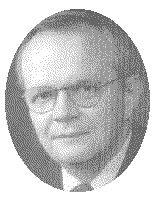 Dr. Hutchinson received his BA at West Virginia University. He then went on to Harvard Medical School. He did his ophthalmology residency and glaucoma fellowship at the Massachusetts Eye and Ear Infirmary.
Dr. Hutchinson received his BA at West Virginia University. He then went on to Harvard Medical School. He did his ophthalmology residency and glaucoma fellowship at the Massachusetts Eye and Ear Infirmary.
Dr. Hutchinson is best known for his years of leadership roles in ophthalmology, both in a regional and national arena. He is past president of the Massachusetts Society of Eye Physicians and Surgeons as well as the New England Ophthalmological Society. He is also past president of the American Academy of Ophthalmology.
Dr. Hutchinson is a past chairman of the American Board of Ophthalmology. He is also recognized for his excellent contribution as the chairman of the National Eye Care Project.
1999
Hal Freeman, MD (1929-2018)
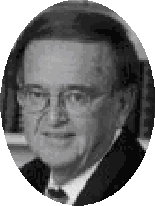 Born in Edmonton, Alberta, Hal Freeman initially sought extraordinary challenges skiing in powder on the Bugaboos of the Canadian Rockies and later in surgical powder while operating on more giant retinal tears than anyone. In addition he has contributed enormously to the understanding of their pathogenesis, prevention and treatment of their most common cause of failure, proliferative vitreoretinopathy.
Born in Edmonton, Alberta, Hal Freeman initially sought extraordinary challenges skiing in powder on the Bugaboos of the Canadian Rockies and later in surgical powder while operating on more giant retinal tears than anyone. In addition he has contributed enormously to the understanding of their pathogenesis, prevention and treatment of their most common cause of failure, proliferative vitreoretinopathy.
After his ophthalmology residency at the Illinois Eye and Ear Infirmary and fellowship at both the Massachusetts Eye and Ear Infirmary and Retina Foundation, Hal embarked on a stellar career of research, clinical practice, and teaching. Hal is Associate Clinical Professor of Ophthalmology at Harvard Medical School, Clinical Senior Research Scientist at the Schepens Eye Research Institute, and Surgeon in Ophthalmology at the Massachusetts Eye and Ear Infirmary. He is a past President of the Retina Society and the Schepens International Society, a past Associate Secretary of the American Academy of Ophthalmology’s Governmental Affairs, and past Chairman of the Council of the American Ophthamological Society. Author of six books, the most recent of which co-authored with Felipe Tolentino was published in five languages, 102 original reports, 49 book chapters, honored by the Canadian Ophthalmological Society, His Majesty King Khaled of Saudi Arabia, the Wilmer Institute, the American Academy of Ophthalmology, The Retina Society, the Retina Society of Japan, the Brazilian Vitreoretinal Society, and the Massachusetts Eye and Ear Infirmary, Hal is the consummate physician, surgeon, and friend. Serving in leadership roles within the Retina Society, AAO and AOS, Hal has achieved pivotal success in each and every endeavor. Four years ago, Hal became the first Associate Secretary for pre-Academy subspecialty programs. With Hal’s enthusiasm and guidance, attendance at these programs increased from 900 in 1993 to 4065 in 1998, totaling one third of the 12,892 ophthalmologists attending the Academy’s meeting.
Unquestionably, however, Hal’s fondest commitment is to NEOS where he has served as President, Secretary, and presently Executive Director. Inaugurating luncheon seminars, printed programs with abstracts and references, an annual meeting for ophthalmic nurses and technicians which now has attendance exceeded only by the Academy’s annual session for nurses and technicians, and most recently subspecialty forums, Hal is the paramount model of organization, wise counsel, always concerned for the overall interests of our membership. When he carves out time for relaxation, Hal can be found cruising off his island home in Cohasset and still skiing the black diamonds.
2001
Richard Joseph Simmons, MD
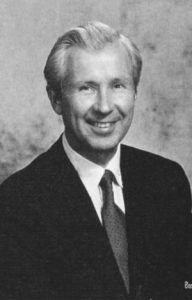 Education: BA, Princeton University: MD,Harvard University
Education: BA, Princeton University: MD,Harvard University
Residency: Massachusetts Eye and Ear Infirmary Harvard Medical School
EDUCATOR
– NEOS President President
– Founder, America Glaucoma Society
– President, Founder, Chandler Grant Society
– Director, Pan American Association of Ophthalmology
– Secretary/Treasurer, Founder, Pan American Glaucoma Society
AUTHOR
– Original Papers: 66 in peer reviewed journals
– Chapters/Reviews: 63
– Textbooks: 2
Dick Simmons has enjoyed a forty year career as a pre-eminent glaucoma specialist in Boston. First, as the student and colleague of Dr. Paul Chandler and Dr. Morton Grant and later as the mentor of an entire generation of glaucoma specialists. He is a gentle teacher and generous colleague.
His commitment to excellence is typified by his approach to glaucoma filtering surgery, You have one chance for an optimal result so be diligent, thorough, and humble.? While always gracious, he disdains those who trivialize ophthalmic sur-gical care and our profession. The glaucoma colleagues he respects most remain aware of our limitations before this insidious, relentless disease.
Dick is blessed with his remarkable wife Anne, four grown children, and many grandchildren. He has had the joy of practicing with his daughter Ruthanne. He is a man of simple tastes with little use for material things with one exception-his sailboat. He is a man of the sea and thrives on or near it. The no nonsense character of the ocean is a metaphor of the man. In our generation, New England has had no better example of a man, physician, a husband, a father, and a friend.
2003
Ralph H. Hinckley, MD
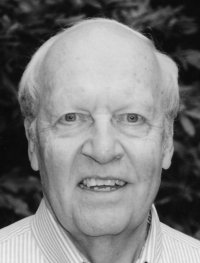 – A.B. cum laude, Harvard College M.D.
– A.B. cum laude, Harvard College M.D.
– Harvard Medical School Residency, Massachusetts Eye and Ear Infirmary
– Assistant Professor of Ophthalmology, Tufts University School of Medicine
– Instructor in Ophthalmology, Harvard Medical School Associate Surgeon in Ophthalmology, Massachusetts Eye and Ear Infirmary
– Consultant in Ophthalmology, Massachusetts General Hospital
– Executive Board, Massachusetts Society of Eye Physicians and Surgeons
– NEOS Member since 1964; President 1986-1987, Ophthalmic Services Chair 1980-1995, Chair, Medicare Advisory Committee for New England 1988-1998
Ralph has been a NEOS member since 1964, joining shortly after his residency and has been active ever since. Besides his busy clinical practice, he was involved in education and administration. He was NEOS President in 1986.
Most of his NEOS time was spent as Chair of the Ophthalmic Services Committee. He pioneered and set the standard for this difficult, sensitive and important liaison between the doctors and third party payors. Ralph€™s quiet, educational style was very much appreciated by all parties, and became the model for this necessary interaction. He was able to help all understand what was appropriate care and fair compensation, in the best interest of patient care. He accomplished this by building mutual respect and relationships based on trust. He served in this capacity for 15 years, unselfishly and without fanfare.
Adapted from NEOS biography by Michael Bradbury
2004
Charles Davis Belcher III, MD [1947-2005]
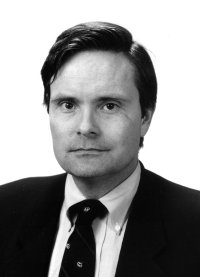 Born: Cambridge, MA
Born: Cambridge, MA
BA: University of Pennsylvania, Philadelphia, PA
MD: Harvard Medical School, Boston, MA
Residency: Massachusetts Eye and Ear Infirmary, Boston, MD
Specialties: Glaucoma, Cataract, Diseases and Surgery of the Anterior Segment
Appointments: Clinical Assistant in Ophthalmology, Harvard Medical School
Assistant Clinical Professor in Ophthalmology, Tufts University School of Medicine
NEOS: Member since 1980, Chair Program Committee 1986-1992, President 1998-1999
Once again the New England Ophthalmological Society honors one of its own with their highest award. To a very select list we add the name of C. Davis Belcher III, MD and bestow upon him the Distinguished Achievement Award. As is the case with previous recipients, these individuals are exceptional in many regards. Dave Belcher is being honored for his distinguished career and many contributions to ophthalmology and NEOS. The brief curriculum vitae above provides only some milestones, Dave Belcher the man is much more complex. Some titles which apply are doctor, educator, leader, innovator, world traveler, husband, father, and friend.
Dave is a very busy, hard working, gifted doctor, caring for a huge number of patients in multiple offices over the years. He is a recognized expert in the field of glaucoma. Besides multiple medical articles, editing journals and a few books, he has educated residents, fellows and has been a major influence for ophthalmic education through his involvement in NEOS. As Program Committee Chair, he broadened membership participation and used his significant organizational skills to modernize the NEOS educational meetings. As NEOS President his agenda included increased roles for our women members, subspecialty meetings, and pushing the organization into the digital age. He has always been for innovative change and the involvement of members from all over New England. He has been a leader within his Boston group practice, and the driving force behind the creation and organization of two successful, state of the art surgery centers.
On the personal side, Dave is so proud of his family, his wonderful wife Valerie and their two interesting, independent children, Jeremy and Jennifer. They are sources of comfort and strength. His pastimes include reading and competitive sports. His true passion is travel. Few people have been to more places, or have done it with more style than Dave.
He has close friends all over the world. They stay in touch and their children visit in
both directions. If you need a contact anywhere, just ask Dave. He is a loyal friend, always available and willing to help, as those lucky enough to count him as a friend know so well. His unique personality and quick wit have enriched life for those around him.
Dave lives life fully and makes things interesting.
So, for the above and much more, we honor Dave Belcher, who has made our journey better, richer and more fun.
2015
Roger F. Steinert, MD – (1950-2017)
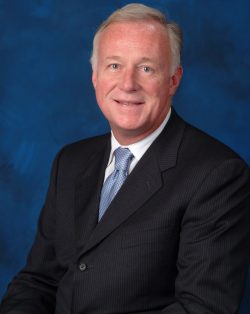 It is with great pleasure that the New England Ophthalmological Society bestows our Distinguished Achievement Award on Roger F. Steinert, MD. Dr. Steinert is currently the Director of the Gavin Herbert Eye Institute, Chair of the Department of Ophthalmology, and Interim Dean of the School of Medicine at the University of California, Irvine; however, his roots run deep in Boston. He surely ranks as one of New England Ophthalmology’s favorite sons. He was born in Lawrence, MA and went to Phillips Andover Academy, Harvard College, and Harvard Medical School, followed by an ophthalmology residency at the Massachusetts Eye and Ear Infirmary.
It is with great pleasure that the New England Ophthalmological Society bestows our Distinguished Achievement Award on Roger F. Steinert, MD. Dr. Steinert is currently the Director of the Gavin Herbert Eye Institute, Chair of the Department of Ophthalmology, and Interim Dean of the School of Medicine at the University of California, Irvine; however, his roots run deep in Boston. He surely ranks as one of New England Ophthalmology’s favorite sons. He was born in Lawrence, MA and went to Phillips Andover Academy, Harvard College, and Harvard Medical School, followed by an ophthalmology residency at the Massachusetts Eye and Ear Infirmary.
Dr. Steinert practiced in Boston and was an active member of NEOS for more than 20 years. During much of that time he was perennially one of the most sought-after member speakers at our meetings. It is hard to believe that he left Boston a decade ago and that many of our younger members have not had the privilege of hearing him speak. He has always been a uniquely gifted teacher and his presentations at NEOS were consistently a huge draw because they were cutting edge and delivered with unmatched clarity; consequently they had a profound influence on many hundreds of anterior segment surgeons here in New England.
Of course, his impact on ophthalmology over the past three decades has extended far beyond our region. Dr Steinert has also been an enormous contributor to the wealth of ophthalmological knowledge nationally and internationally. His outstanding contributions are far too numerous to list but include many critically important publications, visiting professorships, and awards and honors from national and international ophthalmic societies. Highlights include the ASCRS 2004 Binkhorst Lecture, 2003 ASCRS Grand Prize Award for Video “Dr. Zernicke’s View of the World”, and 2007 First Place Video award for “Femtosecond Laser Corneal Transplantation” from the European Society of Cataract and Refractive Surgery. He also served as President of the ASCRS for 2005-2006 and Program Chair of their annual meeting from 2005-2013.
Dr. Steinert’s 30 years of research and teaching have concentrated on understanding and improving the optical system of the eye with special attention to cataract surgical techniques and management of complications, refractive surgery, and corneal transplantation. His laboratory group was the second in the world to pioneer the study of excimer laser photoablation in 1983. He began clinical trials of phototherapeutic applications in 1987 and refractive applications in 1989. His work was critical as he was the Medical Monitor for FDA trials and then the Presenter to the FDA’s Ophthalmic Devises Panel; these lead to the milestone approval of the excimer laser. He continues to research the application of wavefront and topographic guided excimer laser treatment of corneas with functionally abnormal optics, such as after cornea transplantation or complicated refractive surgery. He is also the world leader in the application of femtosecond laser for corneal transplantation incisions.
We all know Dr. Steinert’s as an accomplished researcher, as a great teacher, and as a surgeon’s surgeon, but those who know him best never fail to mention his integrity, his kindness and that he is a true gentleman. For these reasons we are most proud to give him the NEOS Distinguished Achievement Award.
Martin Wand, MD
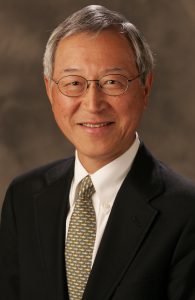 Dr. Martin Wand was born in Shanghai, China, immigrated to the US in 1950, and became a naturalized US citizen in 1965. He received his B.S. and M.D. degrees from Yale University and did his ophthalmology residency at MEEI (1975) and glaucoma fellowship with Morton Grant and Tom Hutchinson (1976). He has been a Director and Past Chair of the American Board of Ophthalmology, the Chair of the Council and a Trustee of the American Academy of Ophthalmology, and past president of the New England Ophthalmological Society. He was the past chair of the Foundation of the Academy’s National Glaucoma EyeCare Program and has been the American Glaucoma Society Councilor to the Academy and a member of the Board of the American Glaucoma Society. He has received the Academy’s Honor, Senior Honor, Lifetime Honor Awards, and two Secretariat Awards. Currently Clinical Professor of Ophthalmology at the University of Connecticut School Of Medicine, he has written over 130 journal articles, educational videos, and book chapters, and has given over 250 talks, including the Chandler–Grant Lecture.
Dr. Martin Wand was born in Shanghai, China, immigrated to the US in 1950, and became a naturalized US citizen in 1965. He received his B.S. and M.D. degrees from Yale University and did his ophthalmology residency at MEEI (1975) and glaucoma fellowship with Morton Grant and Tom Hutchinson (1976). He has been a Director and Past Chair of the American Board of Ophthalmology, the Chair of the Council and a Trustee of the American Academy of Ophthalmology, and past president of the New England Ophthalmological Society. He was the past chair of the Foundation of the Academy’s National Glaucoma EyeCare Program and has been the American Glaucoma Society Councilor to the Academy and a member of the Board of the American Glaucoma Society. He has received the Academy’s Honor, Senior Honor, Lifetime Honor Awards, and two Secretariat Awards. Currently Clinical Professor of Ophthalmology at the University of Connecticut School Of Medicine, he has written over 130 journal articles, educational videos, and book chapters, and has given over 250 talks, including the Chandler–Grant Lecture.
After almost 40 years in the practice of glaucoma, he has just retired from Consulting Ophthalmologists in Farmington, CT. His current dilemma is deciding which pursuit is now more important: fly fishing or wine drinking.
2016
Simmons Lessell, MD (1933 – 2016)
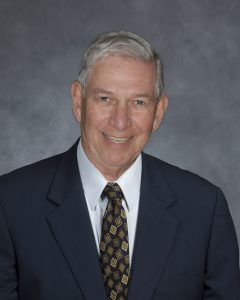 Simmons Lessell was selected to receive the NEOS Distinguished Achievement award in early 2016, with the intention to present it to him at this meeting. Unfortunately, Dr. Lessell’s untimely death has given this event a memorial character. Dr Lessell was one of the most well-known and beloved faculty members within the Department of Ophthalmology at Harvard Medical School. He graduated from Amherst College and then attended Cornell University Medical College, where he worked under Dr. Edward Norton, who was a retina specialist but also served as the neuro-ophthalmologist at Cornell. This experience motivated Dr. Lessell to become a neuro-ophthalmologist, which led to his training as a neurology resident at the University of Vermont and then two years of clinical practice and research within the National Institute of Health (Epidemiology and Genetics Branch). Dr Lessell then performed two years of research at the Howe Laboratory at Mass. Eye and Ear with an emphasis on retinal microglia and histochemistry of the eye and retina. Dr. Lessell then entered Mass. Eye and Ear’s residency program, which he completed in 1966.
Simmons Lessell was selected to receive the NEOS Distinguished Achievement award in early 2016, with the intention to present it to him at this meeting. Unfortunately, Dr. Lessell’s untimely death has given this event a memorial character. Dr Lessell was one of the most well-known and beloved faculty members within the Department of Ophthalmology at Harvard Medical School. He graduated from Amherst College and then attended Cornell University Medical College, where he worked under Dr. Edward Norton, who was a retina specialist but also served as the neuro-ophthalmologist at Cornell. This experience motivated Dr. Lessell to become a neuro-ophthalmologist, which led to his training as a neurology resident at the University of Vermont and then two years of clinical practice and research within the National Institute of Health (Epidemiology and Genetics Branch). Dr Lessell then performed two years of research at the Howe Laboratory at Mass. Eye and Ear with an emphasis on retinal microglia and histochemistry of the eye and retina. Dr. Lessell then entered Mass. Eye and Ear’s residency program, which he completed in 1966.
After residency, Dr. Lessell joined the new Department of Ophthalmology at Boston University Medical Center, attaining the rank of Professor of Ophthalmology, Neurology and Anatomy and serving as the Director of the Department of Ophthalmology at the Boston City Hospital. During his 18 year tenure, he was awarded the highly coveted Metcalf Cup and Prize as the outstanding teacher at BU. Dr Lessell served as consultant to the VA Hospital in Jamaica Plains and at the New England Medical Center. Over these years, Dr. Lessell maintained continuous funding for research from the National Institutes of Health for 13 consecutive years.
In 1983, Dr Lessell was recruited to Mass. Eye and Ear as Director of the Neuro-Ophthalmology service, where he built an outstanding clinical and teaching service. His exceptional teaching and mentoring continued to garner awards when in 2004 he received the ‘Outstanding Teacher Award’ from the residents at MEEI and in 2006 he was recognized as a ‘Distinguished Alumnus’ within the HMS Department of Ophthalmology. After stepping down as the Director of the Neuro-ophthalmology Service in 2004, Dr. Lessell continued to see patients and also became Director of Medical Student Education for the Department of Ophthalmology at HMS. Dr Lessell transformed the HMS Ophthalmology curriculum with a radical redesign of the elective program.
Over his career, Dr Lessell developed an international reputation for excellence and was widely recognized as a gifted clinician and superb teacher both in Neuro-ophthalmology and in many aspects of General Ophthalmology. Dr Lessell was an extraordinary mentor, committed to rigorous training of the highest caliber. He trained countless medical students, residents and more than 40 fellows, more than 30 of whom work at academic medical centers and 4 of whom serve as chairs of department. These achievements were recognized by Harvard Medical School when in 2014 Dr. Lessell was bestowed the prestigious William Silen Lifetime Achievement in Mentoring Award, one of a small number of mentoring awards given across the roughly 11,000 HMS faculty members.
Dr. Lessell had been a member of NEOS since 1968. Over these years, he presented numerous talks and served on many panels for our Neuro-ophthalmology programs. Through his training of a large number of New England Ophthalmologists who provide care to countless patients, he had a profound impact on the delivery of eye care in New England. By every measure, Dr Lessell exemplified the highest standards of professionalism achievable in our field. He continued to be a productive member of the New England ophthalmic community and his absence will be widely felt. Our condolences go out to his family and many colleagues who mourn his loss.
2018
Deborah Pavan-Langston, MD, FACS
 Dr. Deborah Pavan-Langston was the first woman accepted to Harvard Medical School’s Ophthalmology residency at Massachusetts Eye & Ear Infirmary, and the first female fellow in Dr. Claes Dohlman’s corneal fellowship program at the same institution. In addition to this award she was also the first woman to receive the Castroviejo Medal, and the only person, man or woman, to win all three international awards, the Castroviejo Medal, the Thygeson Lectureship, and the Dohlman Award.
Dr. Deborah Pavan-Langston was the first woman accepted to Harvard Medical School’s Ophthalmology residency at Massachusetts Eye & Ear Infirmary, and the first female fellow in Dr. Claes Dohlman’s corneal fellowship program at the same institution. In addition to this award she was also the first woman to receive the Castroviejo Medal, and the only person, man or woman, to win all three international awards, the Castroviejo Medal, the Thygeson Lectureship, and the Dohlman Award.
A graduate of Harvard College and Cornell and Columbia Medical Schools she is a member of both Phi Beta Kappa and Alpha Omega Alpha. Trained in Virology by two Nobel laureates, Drs. John Enders and JD Watson, Debbie was among the first to study the efficacy and toxicity profiles of antivirals in animal models, later translating these findings successfully to humans. Her expertise is sought quite prominently in national and international health policy for the treatment of ophthalmic herpetic disease, including issues of viral latency, diagnosis, public health, and clinical treatment.
Recently retired, Professor Langston was the former Chair of the FDA Ophthalmic Drug Advisory Committee and served on numerous NIH committees as well as the President’s Commission on Bio-terrorism Preparedness at the CDC. She has published more than 250 papers and six books. Her single-authored text, The Manual of Ocular Diagnosis and Therapy, has been published in six editions and in seven languages. She continues to publish results of long-term, on-going studies with former Fellows and serves as a
Trustee of the Massachusetts Eye & Ear Infirmary – all between baby sitting jobs for her grandchildren.
2019
Phil A. Aitken, MD
 Phil Aitken epitomizes the kind of doctor we all want to have taking care of us if we have a medical problem. He is conscientious, thoughtful, intelligent and soft spoken.
Phil Aitken epitomizes the kind of doctor we all want to have taking care of us if we have a medical problem. He is conscientious, thoughtful, intelligent and soft spoken.
Among Vermont ophthalmologists Phil is considered to be one of the best. He has been the glue that holds the Vermont Ophthalmological Society together. Phil was instrumental in organizing meetings and bringing in some of the best speakers in the nation. His dedication to education and learning is unparalleled.
Phil has been a member of NEOS since 1978. He has worked on many committees including: Program Committee, Executive Committee, Budget/Finance Committee, Admissions Committee, and Ophthalmic Services Committee. He has also given many lectures and moderated many sessions. Phil was President of NEOS in 1993-1994.
Phil is an active member of the American Academy of Ophthalmology. Over the past several decades he has dedicated his time and talents to many committees for this organization including serving six years on the AAO Ethics Committee. Phil is involved with education at a local, state, national and international level.
Phil was born in Friend, Nebraska with a population of 1000, “ When everyone was home.” He first attended Oregon State University and completed his college degree at Wheaton College in Illinois. He received his medical degree at Baylor College of Medicine. After an Internship and Neurology Residency at the University of Vermont, he served two years as a commissioned officer at the National Institutes of Health. Following this he completed an Ophthalmology residency at George Washington University. He then traveled to London to complete a Neuro-ophthalmology Fellowship at the National Hospital, Queen Square, and later an Oculoplastics Fellowship at Moorfield’s Hospital.
Phil was the founding chair of ophthalmology at the University of Vermont and served in that position for seventeen years. He has been involved in many research projects and published in many journals. An amazing testament to Phil’s love of ophthalmology and teaching is that he continues as a professor of ophthalmology and neurology and works as a neuro-ophthalmologist at the University of Vermont even into his latter years of life. Phil is a role model for both young and not so young ophthalmologists.
2020
Ann M. Bajart, MD

“There is an art to medicine as well as science, and warmth, sympathy, and understanding may outweigh the surgeon’s knife or the chemist’s drug.” Those are words from the original Hippocratic Oath, and continue on with, “If I do not violate this oath, may I enjoy life and art. May I long experience the joy of healing those who seek my help.”
Dr. Ann Bajart embodies those words. She is a patron of the arts and sciences, a sponsor of young people embarking on their careers. She has remarkably bridged the old guard with the new. She has celebrated tradition as well as change, and with the greatest of humility, she has supported so many. Dr. Bajart was one of the pioneers who broke the mold of the classic ophthalmologist when she became one of the first female residents not just at the Massachusetts Eye and Ear Infirmary, but in the field itself. Her ability to connect with different generations of ophthalmologists, past, present, and future is uncanny. Her generosity of spirit is unparalleled. Her entry onto the scene of Harvard Medical School and then at Mass Eye and Ear helped change the face of ophthalmology, and she did it in only the way Dr. Bajart could.
Dr. Bajart is a former president of this great Society. She received her training at Harvard Medical School. She completed her residency at the Massachusetts Eye & Ear Infirmary. She then went on to complete her Fellowship at Children’s Hospital Medical Center, in Pediatric Ophthalmology. She is a specialist in surgical and medical treatment of the cornea, and a partner at Ophthalmic Consultants of Boston where she has practiced for almost 30 years.
Dr. Bajart has served as a Diplomate for the National Board of Medical Examiners as well as the American Board of Ophthalmology. She is certified by the American Board of Ophthalmology and is a member of the American Academy of Ophthalmology, American Medical Association, Massachusetts Medical Society, American College of Surgeons and New England Ophthalmological Society. She has served as Medical Director of the New England Eye Bank for more than two decades.
Since 1950, NEOS has bestowed the Distinguished Achievement Award on a select few Ophthalmologists who have made valuable contributions to Ophthalmology and to NEOS. Dr. Bajart is the second woman to receive this award. It is an honor for our Society to recognize the great impact Dr. Bajart has made on our field and in our community.